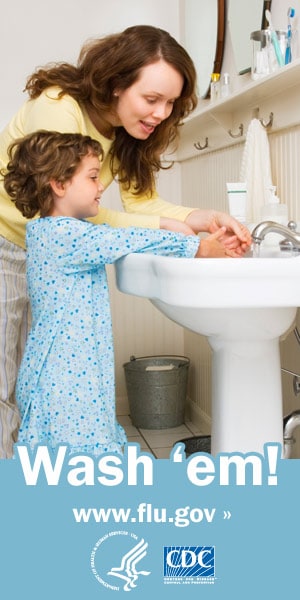WELCOME!
Nursing Rounds is an on-line resource site for nursing students and professional nurses that offers practical tips, new reports, resources, and guidelines, links to on-line presentations, sample NCLEX questions, news and updates, study/handy clinical tools, etc..
Test Yourself: NCLEX practice questions 3
|
| Worried about passing the National Council Licensure Examination (NCLEX), the test from the National Council of State Boards of Nursing (NCSBN) that your state board of nursing will use to determine whether you’re ready to practice nursing? The more practice questions you do, the more confident you'll feel. Try these, then review the answers and rationales that follow. Experts recommend taking many practice questions before the NCLEX, so take advantage of review courses, books, and other products to help you succeed and pass the NCLEX. - A nurse is preparing a teaching plan for a client who was prescribed enalapril maleate (Vasotec) to treat his hypertension. Which of the following instructions should she include in the teaching plan? Select all that apply.
- Instruct the client to avoid salt substitutes.
- Tell the client that light-headedness is a common adverse effect that he doesn't need to report.
- Inform the client that he may have a sore throat for the first few days of therapy.
- Advise the client to report facial swelling or difficulty breathing immediately.
- Tell the client that blood tests will be necessary every 3 weeks for 2 months and periodically after that.
- Advise the client not to change position suddenly to minimize orthostatic hypotension.
- A physician prescribes I.V. normal saline solution to be infused at a rate of 150 mL/hour for a client admitted with dehydration and pneumonia. How many liters of solution will the client receive during an 8-hour shift?
_____________________
- A nurse is caring for a terminally ill client. In which order is she likely to observe the following five stages of death and dying, as described by Elisabeth Kubler-Ross?
- bargaining
- denial and isolation
- acceptance
- anger
- depression
- A nurse is caring for a client in the fourth stage of labor. Based on the nurse's note below, which postpartum complication has the client developed?
6/7/06 1745
Pt.'s 24-hour blood loss is 600 mL. Uterus is soft and relaxed on palpation and pt. has a full bladder. Assisted pt. in emptying bladder and notified Dr. G. McMann of findings. Vital signs stable at present. See graphic sheet for ongoing assessments and perineal pad weights.-----S. Jones, RN
- postpartum hemorrhage
- puerperal infection
- deep vein thrombosis
- mastitis
- Which nonpharmacologic interventions should a nurse include in the care plan for a client who has moderate rheumatoid arthritis?
Select all that apply.
- massaging inflamed joints
- avoiding range-of-motion exercises
- applying splints to inflamed joints
- using assistive devices at all times
- selecting clothing that has hook-and-loop (Velcro) fasteners
- applying moist heat to joints
|
| Answers to NCLEX practice questions |
| - 1,4,6 Rationale: When teaching a client about enalapril maleate, the nurse should tell him to avoid salt substitutes because they may contain potassium, which can cause light-headedness and syncope. He should report facial swelling or difficulty breathing immediately because they may be signs of angioedema, which would trigger his prescriber to discontinue the drug. The client should also be advised to change position slowly to minimize orthostatic hypotension. The nurse should tell the client to report light-headedness, especially in the first few days of therapy, so his dosage can be adjusted. The client should also report signs of infection, such as sore throat and fever, because the drug may decrease his white blood cell (WBC) count. Because this effect is generally seen within 3 months, the WBC count and differential should be monitored periodically.
- 1.2 L Rationale: The ordered infusion rate is 150 mL/hour. The nurse should multiply 150 mL by 8 hours to determine the total volume in milliliters the client will receive during an 8-hour shift (1,200 mL). Then she should convert milliliters to liters by dividing by 1,000. The total volume in liters that the client will receive in 8 hours is 1.2 L.
- 2,4,1,5,3 Rationale: According to Kubler-Ross, the five stages of death and dying are denial and isolation, anger, bargaining, depression, and acceptance.
- 1 Rationale: Blood loss from the uterus that exceeds 500 mL in a 24-hour period is considered postpartum hemorrhage. If uterine atony is the cause, the uterus feels soft and relaxed. A full bladder can prevent the uterus from contracting completely, increasing the risk of hemorrhage. Puerperal infection is an infection of the uterus and structures above; its characteristic sign is fever. Two major types of deep vein thrombosis occur in the postpartum period: pelvic and femoral. Each has different signs and symptoms, but both occur later in the postpartum period (femoral, after 10 days postpartum; pelvic, after 14 days). Mastitis is an inflammation of the mammary glands that disrupts normal lactation and usually develops 1 to 4 weeks postpartum.
- 3,5,6 Rationale: Supportive, nonpharmacologic measures for the client with rheumatoid arthritis include applying splints to treat inflamed joints, using Velcro fasteners on clothes to aid in dressing, and applying moist heat to joints to relax muscles and relieve pain. Never massage inflamed joints because massage can aggravate inflammation. A physical therapy program including range-of-motion exercises and carefully individualized therapeutic exercises prevent loss of joint function. Use assistive devices only when marked loss of range of motion occurs.
Source: NCLEX-RN 250 New-Format Questions, 2nd ed., Lippincott Williams & Wilkins, 2007. |


No comments:
Post a Comment